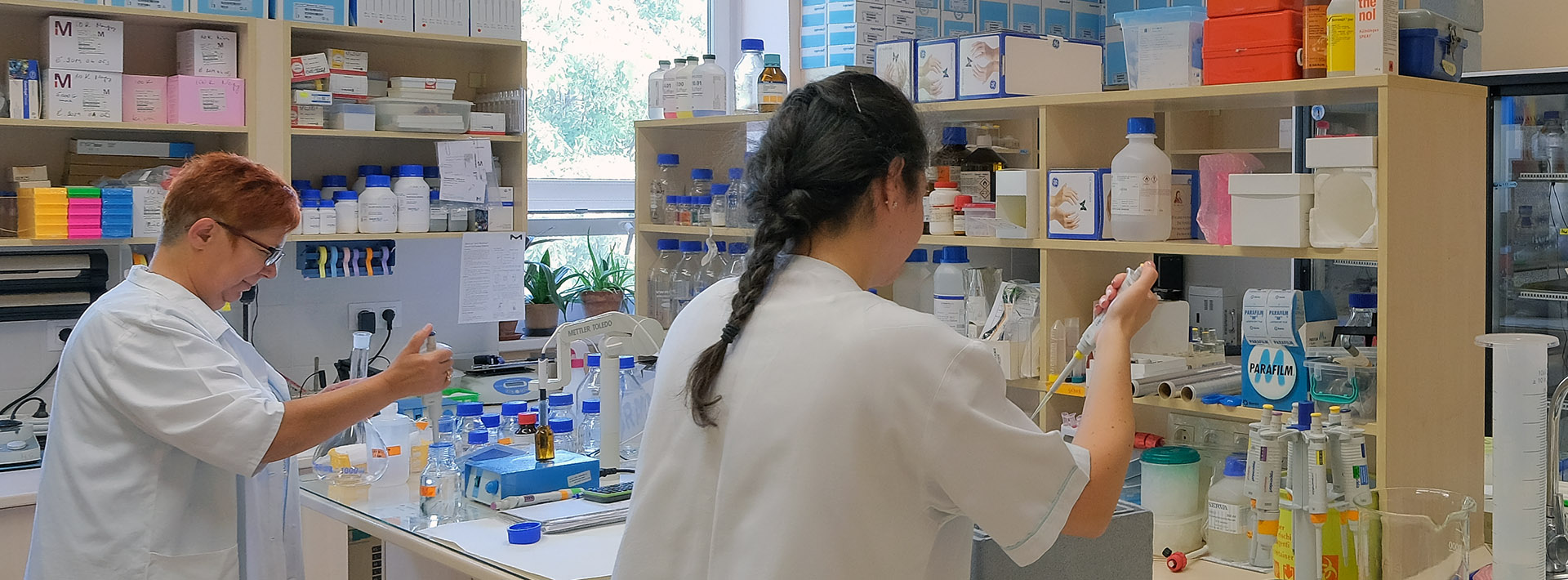Data
Official data in SubjectManager for the following academic year: 2024-2025
Course director
-
Telek Elek
assistant lecturer,
Department of Biophysics -
Number of hours/semester
lectures: 12 hours
practices: 0 hours
seminars: 0 hours
total of: 12 hours
Subject data
- Code of subject: OXF-RFS-h-T
- 1 kredit
- General Medicine
- Optional modul
- autumn
-
Course headcount limitations
min. 5 – max. 20
Available as Campus course for . Campus-karok: ÁOK GYTK TTK
Topic
Disordered proteins compose a unique group of proteins which have been discovered in 1990. These group of proteins don’t have well-defined structures and the lack of functions can be hypothesize. They are partly of fully disordered, which is very interesing and at the same time contradict with the structure-function paradigm. Therefore, disordered proteins draw a great attention in the eye of researchers. According to the literature, the ratio of disordered proteins are increasing with the complexity of the genom. In the human genom approximately 40% of the proteins are disordered, which emphasize their importance suggesting that disordered proteins have crucial biological role in the human organism. Some of these essential roles are the following: multiple interactions in protein-protein interaction networks, signal transduction, neural functions and related neurodegenerative (i.e.: Alzheimer, Parkinson diseases, Schizophrenia), cardiovascular diseases and cancer.
Knowing the disordered proteins and their biological relevance in the frame of obligatory biophysics subject is not applicable because of the lack of time. However, learning and understanding of the biological and biophysical background of disordered proteins will be important. Further aim of the course is to give a comprehensive picture of how these disordered proteins play an important role in the biological functions and in associated diseases.
The beginning of the course is about the structural levels to understand how the proteins build up. In addition, the evolution, functions and functional advantages of disordered proteins in the human organism will be discusses. Moreover, students can get an insight of how disordered protein structural properties can be analyzed by bioinformatic tools. Futhermore, cutting-edge biophysical methods, such as, fluorescence-, and Circular Dichroism (CD) spectroscopy, Small Angle X-ray Scattering (SAXS), Dynamic Light Scattering (DLS), Differential Scanning Calorimetry (DSC) will be discussed, which can provide detailed data about conformational and structural characterization of disordered proteins helping the understand the molecular functions. Turning to the relationship between disordered proteins and diseases, the second part of the course will discuss the relation between disordered proteins and neurodegeneration, as well as the effect of metal ions (iron, manganese, copper etc.) on disordered proteins and how these toxic effects influence the structural changes of disordered proteins. Furthermore, several disordered proteins will be discussed in details how the misfolding and misregulation can lead to neurodegenerative, cardiovascular, and even to cancer diseases.
Lectures
- 1. Introduction, course overview and requirements - Telek Elek
- 2. Protein structure and folding, the levels of protein structure, theory of protein folding: Anfinsen experiment, Levinthal paradox, funnel model of protein folding - Ujfalusi Zoltán
- 3. Overview of disordered proteins, structure-function paradigm, properties of disordered proteins, bioinformatic approaches of disorder analysis - Telek Elek
- 4. Evolution of disordered proteins and their functions, evolution and functional advantages of structural disorder, envolvement in protein-protein interaction network - Telek Elek
- 5. Examination of disordered proteins with molecular biophysical methods, Fluorescence and Circular dichroism spectroscopy, Small angle X-ray scattering (SAXS), Dynamic light scattering (DLS), Differencial scanning calorimetry (DSC) - Telek Elek
- 6. The relationship between structural disorder and neurodegeneration, disordered proteins and neurodegeneration - Takács-Kollár Veronika Tünde
- 7.
The role of disordered proteins in neurodegenerative diseases I. Synuclein, Huntingtin és Ataxin proteins
- Takács-Kollár Veronika Tünde - 8.
The role of disordered proteins in neurodegenerative diseases II. Ab, Tau és Prion proteins
- Ujfalusi Zoltán - 9.
The role of metal ions in neurodegeneration, aggregation propensity of disordered proteins
- Takács-Kollár Veronika Tünde - 10. The role of disordered proteins in diabetes and cardiovascular diseases: Amylin, IRS, Insulin, TnF-a proteins - Takács-Kollár Veronika Tünde
- 11. The role of disordered proteins in cancer. Disordered proteins as potential targets in cancer therapy - Ujfalusi Zoltán
- 12. Test - Ujfalusi Zoltán
Practices
Seminars
Reading material
Obligatory literature
Literature developed by the Department
Notes
Recommended literature
Medical Biophysics book and given literature publications which links will be provided in the lecture slides.
Conditions for acceptance of the semester
accomplishment of written test
Mid-term exams
There will be a written test on the last week of the semester. Supplemental written test dates will be provided for the students.
Grading: Below 60% fail (1), 60-70% satisfactory (2), 70-80% medium (3), 80-90% good (4), Above 90% excellent (5)
Making up for missed classes
There is no need to make up if the number of missing courses don't exceed over 15%
Exam topics/questions
Written test will close the semester for this course. There will be no further test in the exam period.
